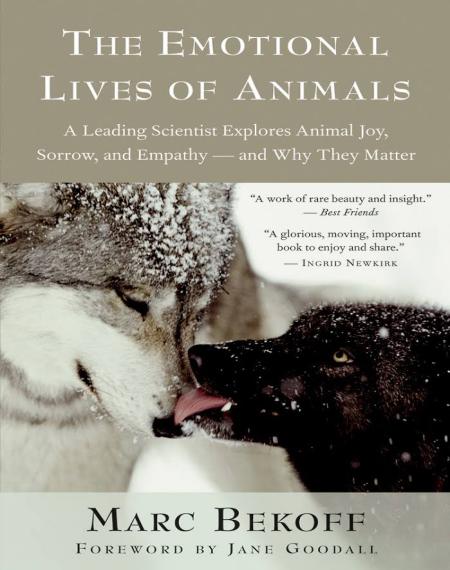Welcome to the fascinating world of animal emotions. As a scientist who’s studied animal passions and beastly virtues for more than thirty years, I consider myself very fortunate.
The Emotional Lives of Animals

I love what I do. I love learning about animals, and I love sharing with others what my colleagues and I discover. Whenever I observe or work with animals, I get to contribute to science and develop social relationships at the same time, and to me, there’s no conflict between those two activities.
Before I begin, however, I’d like to address an important matter of terminology. In discussions of “animal emotions,” we sometimes forget that humans are also animals. However, it’s cumbersome to use the phrase “nonhuman animals” to refer to beings we typically call “animals.” And so in this book I use the word animals to mean “nonhuman animals” — realizing of course that we’re all animals, and hopeful that this linguistic shorthand won’t perpetuate any “forgetfulness.”
The field of animal emotions — which is a specific area of focus within the larger scientific discipline of cognitive ethology, or the study of animal minds — has changed a great deal in the past thirty years. When I first began my studies, researchers were almost all skeptics who spent their time wondering if dogs, cats, chimpanzees, and other animals felt anything. Since feelings don’t fit under a microscope, these scientists usually didn’t find any — and as I like to say, I’m glad I wasn’t their dog! But thankfully, there are fewer and fewer skeptics today, and while debates over whether animals have emotions still occur, the question of real importance is becoming why animal emotions have evolved the way they have. In fact, the paradigm is shifting to such an extent that the burden of proof now falls more often to those who still argue that animals don’t experience emotions. My colleagues and I no longer have to put tentative quotes around such words as happy or sad when we write about an animal’s inner life. If our dog, Fido, is observed to be angry or frightened, we can say so with the same certainty with which we discuss human emotions. Scientific journals and the popular press regularly publish stories and reports on joy in rats and grief in elephants, and no one blinks.
Password: pdflibrary.net
